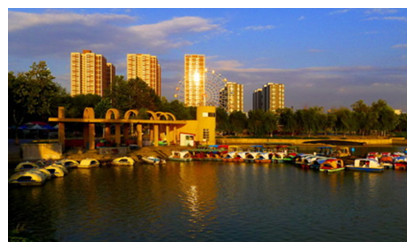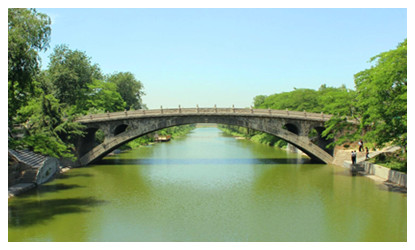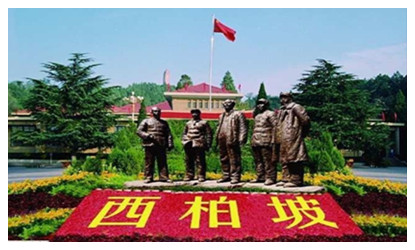Skype: neodalle-travel
Tel: +86 135 7447 2266
E-mail: sales@zhangjiajieholiday.com
 Shijiazhuang City, located in the vicinity of the North China Plain, is the capital of Hebei Province, neighbors Beijing and Tianjin in the north, Bohai Sea in the east, and lies against the continuous Taihang Mountain in the west. As the economic, political, cultural and scientific center of Hebei Province, Shijiazhuang is becoming more and more beautiful with recent urban development. A jade-like moat embraces the city gently, bordered by 20 charming parks. This beautiful city is filled with culture and development, attracting visitors with new features daily.
Shijiazhuang City, located in the vicinity of the North China Plain, is the capital of Hebei Province, neighbors Beijing and Tianjin in the north, Bohai Sea in the east, and lies against the continuous Taihang Mountain in the west. As the economic, political, cultural and scientific center of Hebei Province, Shijiazhuang is becoming more and more beautiful with recent urban development. A jade-like moat embraces the city gently, bordered by 20 charming parks. This beautiful city is filled with culture and development, attracting visitors with new features daily. History of Shijiazhuang
Shijiazhuang is often referred to as being lucky in recent Chinese history. Once a small village, it developed under modern railway construction. A century ago, when the Lu-Han Railway stretched to the former Shijiazhuang Village, it brought with it new opportunities, opening an industrial chapter in this city. No one could have predicted that this small, unknown village would have developed rapidly into the modern capital city of Hebei Province.
What to see in Shijiazhuang?
Though it is a relatively young city, it is located on fertile land that boasts splendid cultural history. As such, the city is home to many significant cultural relics, such as the oldest stone-arch bridge in China, Zhaozhou Bridge, and one of China's three hanging temples Qiaoloudian Hall (Bridge-Tower Hall). Moreover, the grand Taihang Mountain, which lies to the west, provide charming natural scenery. Mt. Cangyan Scenic Area and Zhangshiyan Scenic Area also attract visitors from all over China and the world. Here lists top attractions in Shijiazhuang.
 |
 |
 |
| Zhaozhou Bridge | Baiyangdian Lake | Xibaipo Village |
When to visit Shijiazhuang?
Shijiazhuang has a temperate, monsoon climate with four distinct seasons and an average annual temperature of 14.2 C (57.56
C (57.56 F). The city has hot summers and cold winters; in June the average monthly temperature can reach around 26.5
F). The city has hot summers and cold winters; in June the average monthly temperature can reach around 26.5 C (79.7
C (79.7 F) (so it is recommended that you bring sufficient supplies of sunscreen and water, and also eat plenty of fresh fruits), while weather in January can be quite cold of around -2.9
F) (so it is recommended that you bring sufficient supplies of sunscreen and water, and also eat plenty of fresh fruits), while weather in January can be quite cold of around -2.9 C (26.78
C (26.78 F). It is therefore recommended that tourists planning on visiting Shijiazhuang do so in the autumn, when the weather is at a happy medium between the two extremes.
F). It is therefore recommended that tourists planning on visiting Shijiazhuang do so in the autumn, when the weather is at a happy medium between the two extremes.
The city's nearby mountains, however, remain a rewarding sight for visitors throughout the year: flowers reach full-bloom in spring; the forests are at their most verdant during the summer; the trees' golden leaves cover the mountain side during autumn; while in winter the snow-capped mountains will have many a visitor looking on in awe.
How to reach Shijiazhuang?
Before the early 1900s, Shijiazhuang was only a small, unknown village in north China. However, in 1902 and 1903, the finishing of Lu-Han Railway (Beijing-Hankou Railway today) and Zheng-Tai Railway (Shijiahzuang-Taiyaun Railway today) here started a new stage of the city. Relying on the two railways, industry in this city grew quickly. Then, during the latter hundred years, the rapidly developing economy was responsible for promoting further development of the transportation infrastructure.
Almost since the mid-age of 20th century, the city has been the goods and capital distributing center of Shanxi and Hebei provinces. Transportation by road in this area then kept developing at high-speed to satisfy the requirement of trade. So far, 4 expressways, 4 national highways, 2 provincial highways, and 42 county highways forms a huge network in a total length of 6375 kilometers (3963.7 miles), which makes places in and around the city easily reachable.
Shijiazhuang Travel Tips
Useful Numbers:
Time Inquiries: 117
Telephone Number Inquiries: 114
Weather Forecast: 121
City-bus Inquiries: 87218888
City-bus Service: 86012572
Taxi Complaints: 83622882
Tourist Complaints: 86061719; 86061715
Consumer Complaints: 12315
China Mobile Service Tel: 10086
China Union Service Tel: 10010; 10011
China Telecom Service Tel: 10000
 Ask Questions ?
Ask Questions ?